UPDATED: Fantasy Football 2023 Draft Strategies, First Five Rounds From Picks 7-8-9
Editor’s note: Kyle Wood’s four-part series on fantasy draft strategy based on where you’re drafting has been very popular, so we asked Kyle to add a few updates to account for changes in average draft position since these stories were originally published.
Mock drafts are a key component of draft day preparation. They give you an idea of which players will be available when and how your team will turn out depending on the path you take.
But when it comes time for your actual draft, it’s unlikely that everything falls into place the way it did for you in your 17th mock draft. That’s why you need a plan in place, and a flexible one at that, to set you and your team up for success this season.
That’s what this draft strategy series is all about: Team-building. Going best available each round isn’t going to net you the best team and neither is blindly following pre-draft rankings. To build the foundation of a balanced roster, follow the steps laid out below for teams picking from the seventh, eighth and ninth draft slots.

If you’ve been assigned an earlier draft spot, find out how to proceed from picks 1-3 here and 4-6 here. And look out for the 10-12 breakdown later this week.
Draft Slot Strategies
(Note: The ADP data and draft strategy advice is intended for 12-team, PPR leagues.)
Drafting in Round 1
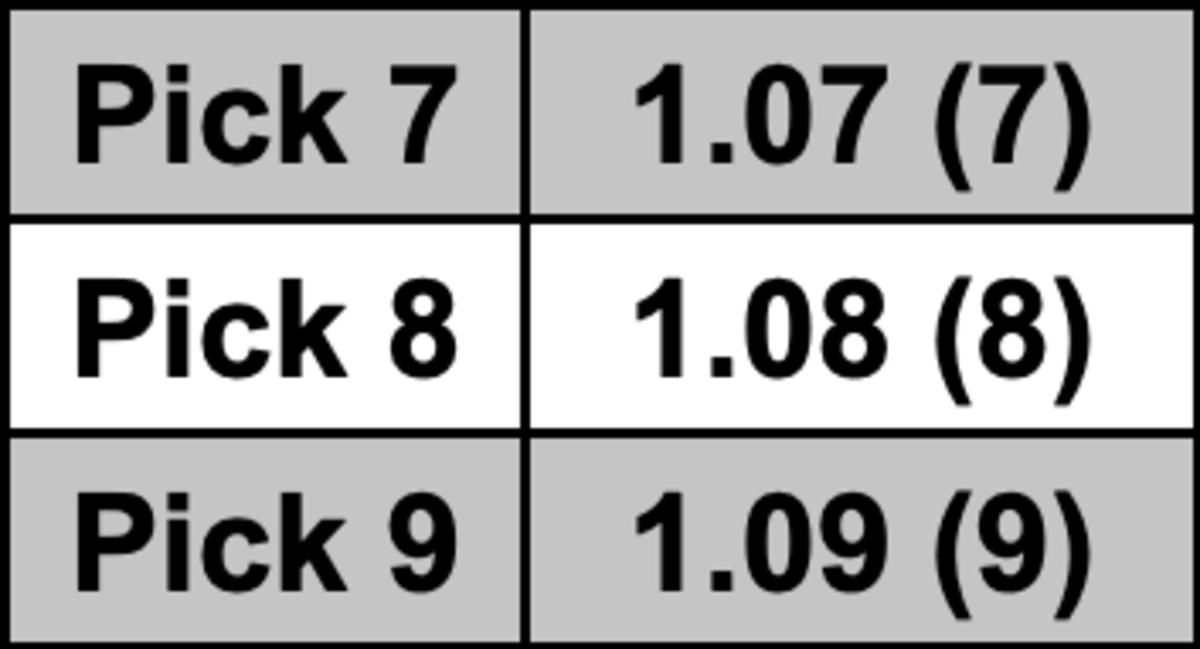
UPDATE: There are three new players projected in the 7-9 range. Previously, managers could expect receivers Stefon Diggs and A.J. Brown and running back Austin Ekeler, but Ekeler’s ADP rose while the receivers both fell a few spots. Now, Cooper Kupp, Saquon Barkley and Bijan Robinson are being drafted in the back half of the first round. It’s a shift, but largely a marginal one as these are all still blue-chip players. Kupp is two years removed from an overall WR1 finish and Barkley and Robinson, a rookie, profile as two of the best pass-catching threats at their position.
At this point of the first round, you’re at the mercy of the managers picking ahead of you, but plenty of impact players will still be available. Current average draft position (ADP) data projects Stefon Diggs, Austin Ekeler and A.J. Brown going in the 7-9 range. Diggs was the WR4 in 2022 and he’s never finished worse than WR7 across three seasons in Buffalo; Ekeler was the overall RB1 last year, so it would be a coup to secure him in the back half of the first; and Brown is fresh off a WR6 finish and the best campaign of his career in his first year in Philadelphia.
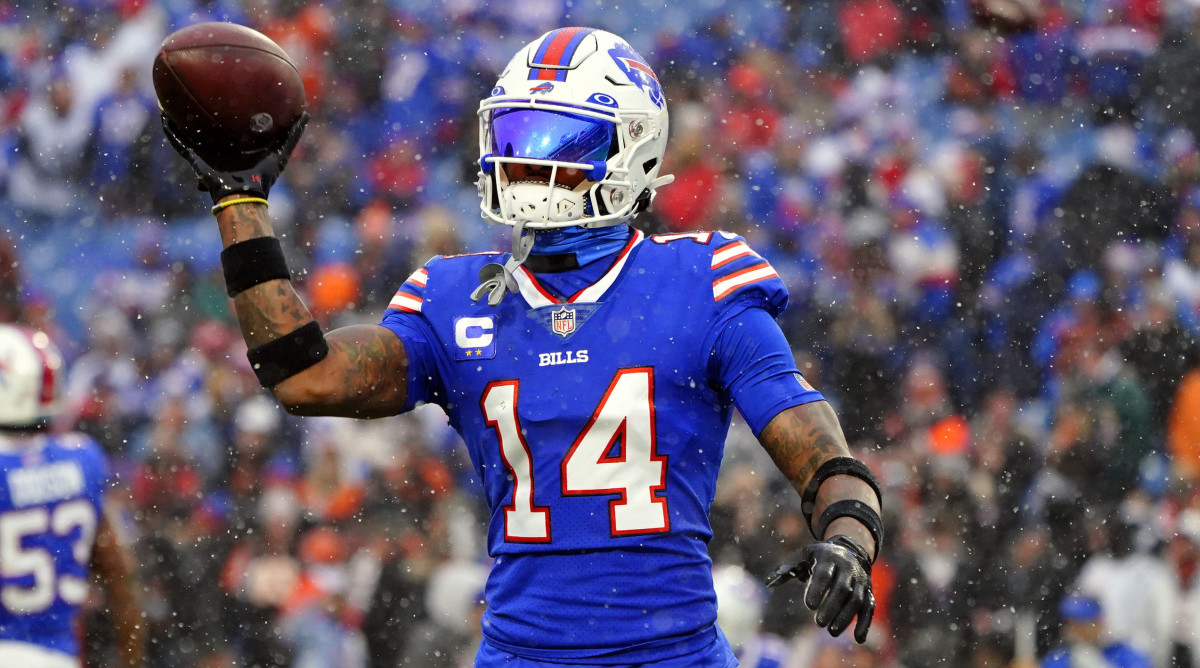
However, there are other routes to choose from at this point of the draft. It’s possible that Travis Kelce, the reigning TE1, falls a few spots — his current ADP is sixth overall. You can also call your shot on rookie Bijan Robinson, the highest-drafted running back since Saquon Barkley in 2018. Fantasy managers have high hopes for the Falcons’ first-year player in Arthur Smith’s run-heavy offense. Michael Fabiano made the case for Robinson as a top-eight pick last month, saying in part: “Robinson should be the next in line to success as a top-10 running back, and I wouldn’t be surprised if he’s the fifth straight such rookie to finish in the top five.”
I like the idea of starting with a receiver who’s capable of finishing as the WR1 and I believe Diggs has that in his range of outcomes. However, I’d be hard pressed to pass up a shot at drafting Ekeler if he’s still on the board. If the Chargers star goes early, that might mean either Cooper Kupp or Tyreek Hill fall a few spots — both players have WR1 finishes on their resumes.
It’s worth noting that Fabiano has Barkley ranked seventh overall (ahead of Robinson, Kelce and Brown), which is a pretty big leap from his current second-round ADP. Barkley parlayed his healthiest season since he was a rookie into an RB5 finish and the Giants responded by placing the franchise tag on him. Barkley, like Josh Jacobs, appears to be a threat to hold out, which may be the reason behind his depressed ADP.
Drafting in Rounds 2 and 3
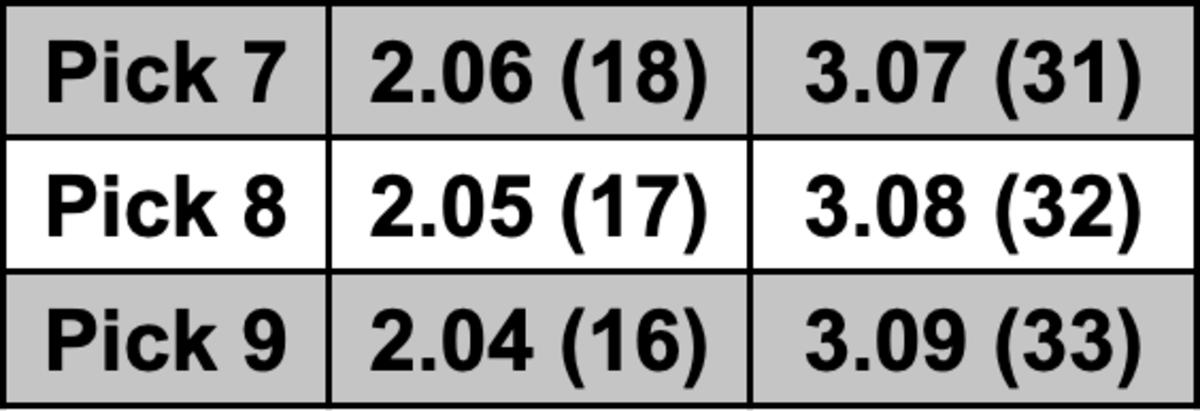
UPDATE: The mid-teens is still a great spot to find a foundational running back. Nick Chubb’s ADP has risen and Jonathan Taylor’s has fallen but Derrick Henry, Tony Pollard and Josh Jacobs can all be had in the 16-18 range. Those are all bonafide RB1s to pair with a first-round receiver and absolute luxuries to have at RB2 if your draft began with Barkley or Robinson. Because of the size of the gap between these second- and third-round selections, if your sights are set on a high-end quarterback, now’s the time to pull the trigger. Patrick Mahomes, Jalen Hurts and Josh Allen are not making it to the 30s.
What you will find in the early 30s, though, are high-end RB2 and WR2s, such as DK Metcalf, Rhamondre Stevenson and Joe Mixon. A WR-RB-RB build that looks something like Kupp-Henry-Stevenson is a strong start and you could do much worse than Metcalf or Calvin Ridley at WR2. As for a third-round signal-caller, Lamar Jackson is still going in the mid-30s and I like him at his current cost.
You might be shocked by some of the names that are being drafted in the late teens. The 16-18 picks by ADP are Nick Chubb, Barkley and Jonathan Taylor. That’s right, Taylor and Barkley, both of whom have overall RB1 seasons under their belt, and Chubb, perhaps the best pure runner in the NFL, can be had at this point of the draft. You’re probably used to spending a late first-round pick to acquire running backs of this caliber but with receivers going for a premium, high-end running backs are available later than usual.
Chubb is coming off the best season of his career, which saw him romp to an RB6 finish. The Browns’ offense is expected to take a step forward this year and with Kareem Hunt out of the picture, Chubb is set to field more passing-game work. You already know Fabiano is comfortable taking Barkley as high as seventh overall, so snagging him 17th is tremendous value. And then there’s Taylor, the first overall pick last year who disappointed managers during an injury-riddled season. Perhaps he regains some of the glimmer from his terrific 2021 campaign, though the presence of dual-threat rookie quarterback Anthony Richardson could take away from his bottom line.
The receivers available in this range are not as enticing relative to the running back talent. It’s possible, though unlikely, that Jaylen Waddle — the WR8 in 2022 — slides a few spots. But unless he’s still available, I’d prefer securing a first or second running back in the second round. I much prefer a runner of Chubb, Barkley or Taylor’s caliber to Chris Olave or even DeVonta Smith.
The third round is when you should consider addressing WR1 if you went RB-RB with your first two picks. If you already have a running back and a receiver on your roster, you can secure your WR2 or RB2 here. There’s also door No. 3: Draft a quarterback.
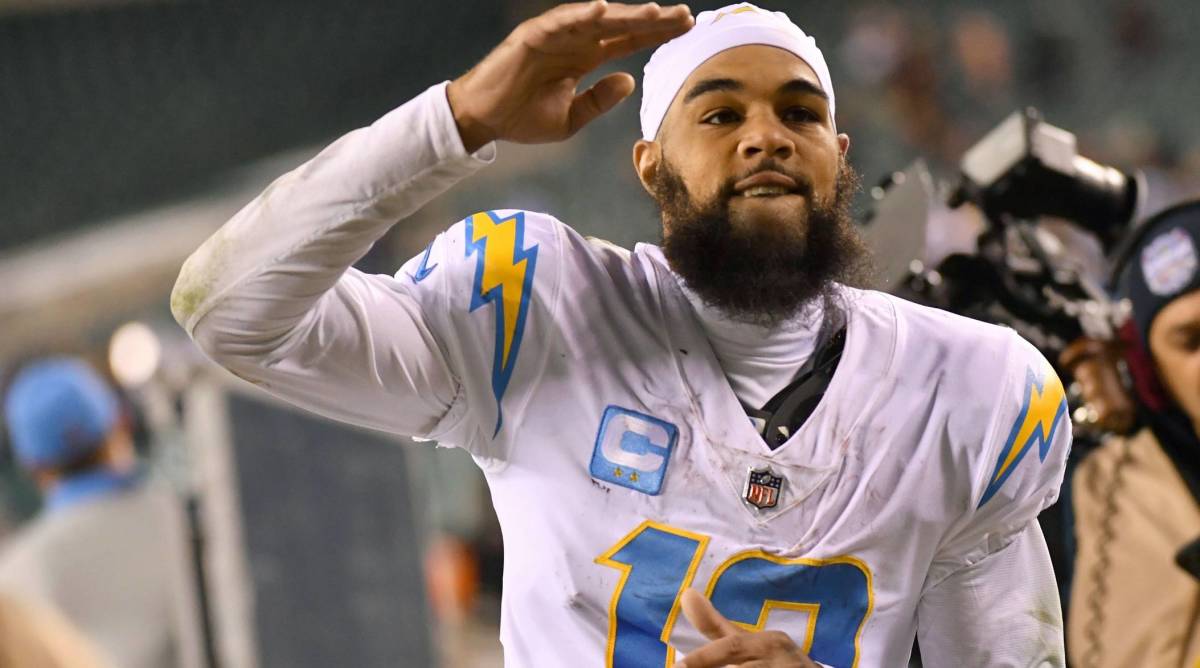
Keenan Allen, Calvin Ridley, Deebo Samuel and Amari Cooper are some of the receivers projected to be available in this pick range. All of them have top-12 upside, but there’s quite a bit of risk associated with Samuel given San Francisco’s quarterback situation and Ridley given his long layoff from football. Allen and Cooper are safer picks in my view.
As far as running backs go, Breece Hall could be had in the early 30s. However, there’s no assurance he’ll be ready to go Week 1 coming off an ACL tear and there’s plenty of smoke that free agent Dalvin Cook could be headed to the Jets, which would spell trouble for the second-year pro. I don’t mind reaching a few picks for Lions rookie Jahmyr Gibbs, who profiles as a dynamic pass-catching threat. He’d make for a great complement to an established talent like Chubb or Barkley in your backfield.
What I like most about this draft pick grouping is that it sets you up well to land Lamar Jackson. He’s kind of in a tier of his own between the top three quarterbacks (Patrick Mahomes, Jalen Hurts and Josh Allen) and the next group (Joe Burrow, Justin Fields and Justin Herbert). The Ravens have a new offensive coordinator (Todd Monken) and new pass-catchers in place (Zay Flowers and Odell Beckham Jr.) to help get the most out of Jackson, whose seasons have been cut short the last few years. The idea of a Diggs, Chubb, Jackson start is appealing.
Drafting in Rounds 4 and 5
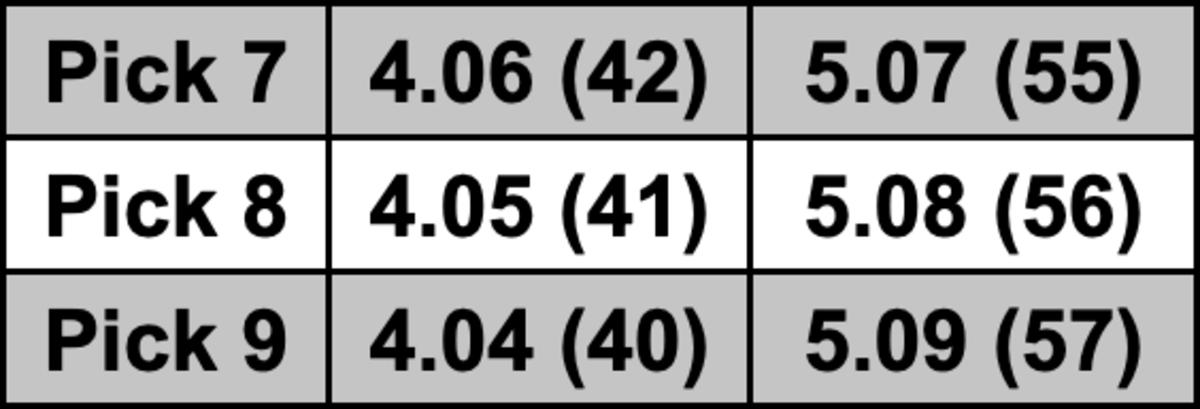
UPDATE: The players now available in the early 40s are a mixed bag of established veterans and young players with demonstrated upside. Amari Cooper and Keenan Allen are more than capable WR2s and Breece Hall and Kenneth Walker are both in positions to build on promising rookie campaigns, though backfield competition could hold them both back.
The other available avenue is quarterback if you don’t mind reaching a few picks for Justin Fields or Justin Herbert. As for the fifth round, there are solid starters still available who might be best suited at flex, like Christian Watson and Mike Williams. Again, if you’re comfortable reaching, you can have your pick between two third-tier tight ends: Kyle Pitts and Dallas Goedert.
The players available early in the fourth round have quite a few question marks around them. Christian Watson is going from Aaron Rodgers to Jordan Love at quarterback, the Jaguars reportedly intend to reduce Travis Etienne Jr.’s workload and DeAndre Hopkins remains a free agent — two of his potential destinations (Tennessee and New England) don’t necessarily scream fantasy production. Expand the scope a few spots in either direction and the questions continue. Can Drake London shine in a run-heavy offense? Will Sam Howell be able to support Terry McLaurin? And what of Jerry Jeudy in a new offense?
So, what should you do when it seems there’s more questions than answers about this crop of players? Well, you can reach a few spots in hopes of getting guaranteed production. Maybe try your hand at Christian Kirk as a WR2 (he was the WR11 in 2022). Or if you didn’t already snag Jackson, consider Joe Burrow (the QB4 last season). Of the aforementioned players, I might take the shot on Hopkins and I’m not opposed to McLaurin as a WR2, either.
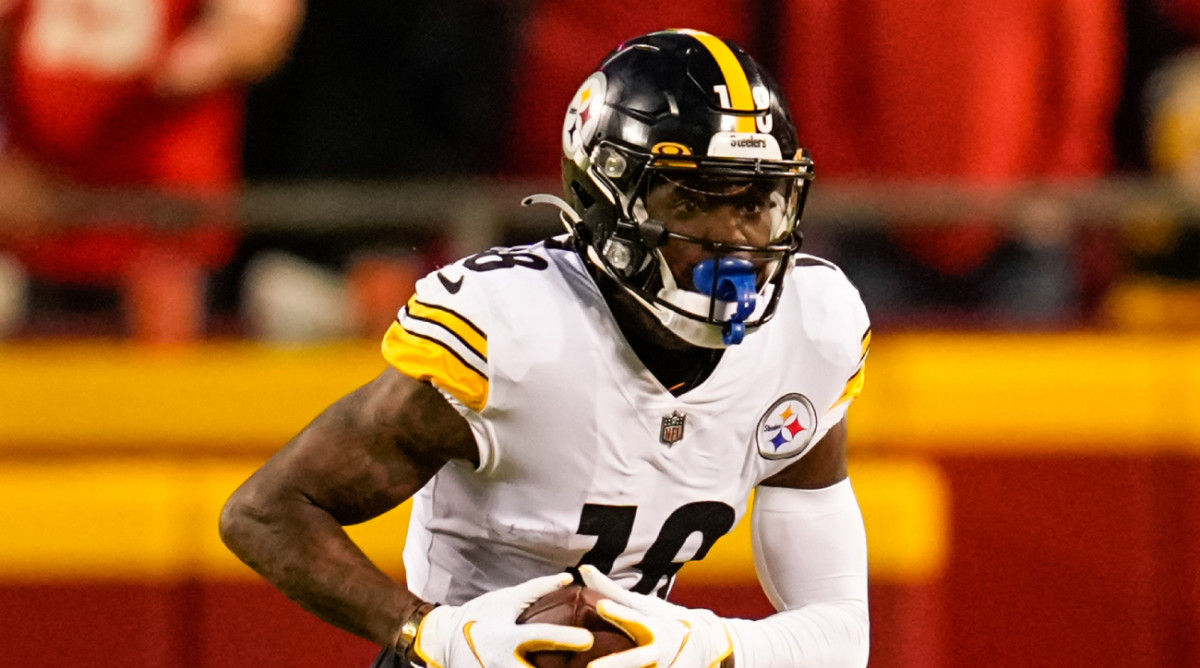
If your team is still QB-less — and there’s nothing wrong with that! — it’s time to find a flex in Round 5. I’m a big fan of quite a few of the players going in this area of the draft, starting with Chris Godwin. In back-to-back injury-shortened seasons he’s turned in top-20 finishes. Another good bet on volume (and positive touchdown regression) is Diontae Johnson, who has the fifth-most targets in the league since 2020. And then there’s Tyler Lockett, the perennially underrated Seahawks wideout who’s blessed managers with five top-20 seasons in a row. Not bad for your WR3!
This is a better spot to grab a receiver than a running back, but you may be able to land Alexander Mattison here. The Vikings running back is taking over for Cook after backing him up for years and Mattison is set to inherit a hefty workload, which I explored in depth here. J.K. Dobbins should also be on the radar considering what he'd be capable of in the Ravens’ offense if he’s able to stay healthy.
Takeaways from Drafting Seventh, Eighth or Ninth
UPDATE: I still like the idea of starting your draft off with a receiver given the running back talent that should be available in the second. I’d caution against a second-round quarterback given the quality of skill-position players you’d be missing out on in that area of the draft. You’re likely better off targeting Jackson in the third or punting on the position until the fourth, fifth or even later given the skill-position players projected in these particular pick ranges.
This pick grouping is preferential to 4-5-6, though it’s still not as good as the 1-2-3 slots in my opinion. You have a few different team-building strategies available to you in the first round, each of which will send you down a different path. Wide receiver seems like the most likely route, running back makes sense — especially if Ekeler is available — and tight end is a wild card but it’s hard to argue against Kelce’s body of work. I’m a fan of the WR-RB-RB-WR-WR path if you don’t mind waiting on quarterback. If you insist on adding a signal-caller in an early round, I’d recommend Jackson in the third, so a WR-RB-QB-RB/WR-WR/RB build would work nicely. The running back talent in the second round is incredible but it thins out rather quickly from this spot, so if you wait on RB2 you might end up waiting a few rounds. At receiver, there’s players I like in this range in the third round and on. For that reason, an RB-RB start (think: Ekeler-Chubb) should be considered as well.
